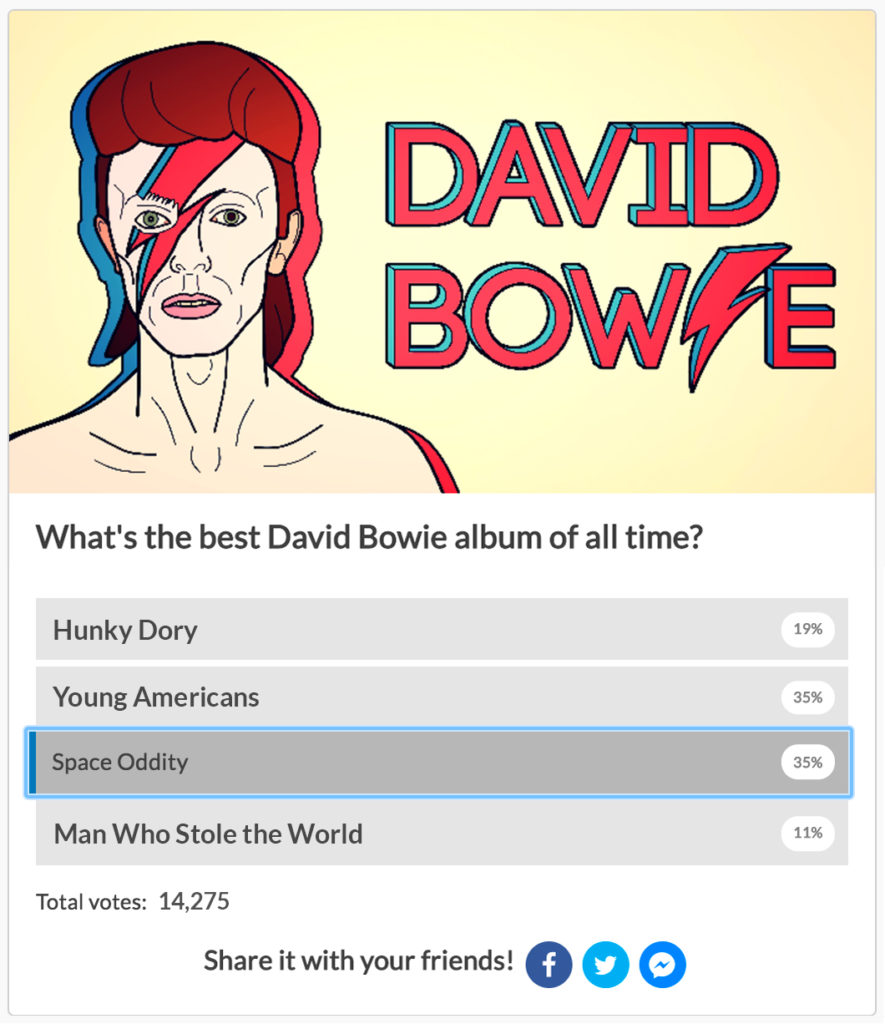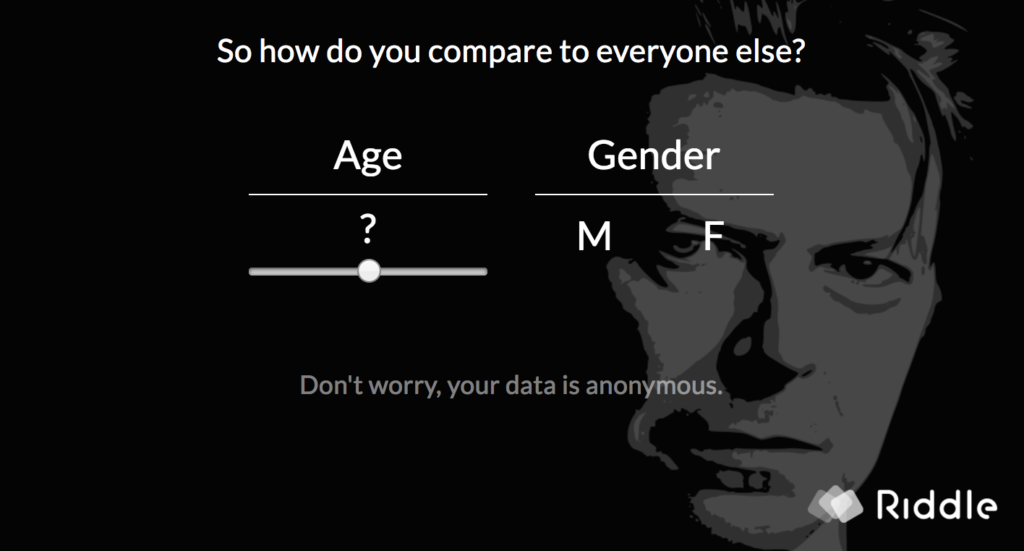Polls are the ‘jack of all trades’ of the online quiz world. Flexible and quick to deploy, they can be used to gather feedback (“What do you think about our new home page?”) or instant audience engagement (“What’s the best David Bowie album of all time?”). They only take minutes to create and can therefore be added to pretty much any article you publish.
Instant Feedback
Polls have a different value proposition for your readers compared to a survey. Instead of just giving feedback without seeing the final results. After each poll question, each reader can immediately see the poll results for instant gratification.

Answering the question is only part of the poll process. We also want to find out how our answers compare with the rest of the world. We find that 30-40% of readers will provide their age and gender information to get this detailed comparison of their poll choices.
Compare yourself
With some quiz builders, you can also use polls to get a breakdown of opinions by age and gender. We recommend combining your poll with a follow up question such as “Thank you for voting! To see how your opinion compares, please tell us your age and gender”. (Age and gender aren’t as intrusive as asking for an email so you should see good completion rates here.)

There’s a built-in truthfulness loop at play here as well. Similar to quizzes and personality tests, readers will be more honest entering their age and gender – lying would make any comparison of their answers meaningless.
Imagine you are using quizzes to sell vacations – you could use polls before a quiz in a sales and marketing funnel to segment your readers. You could start off with a simple poll asking, “Would you rather vacation with or without kids?”
Depending on the poll answer, you would show each reader a different quiz tailored to their vacation preferences:
- Kid-free – ‘What’s your dream getaway?’
- Family-friendly – ‘What’s your ideal family holiday?’



